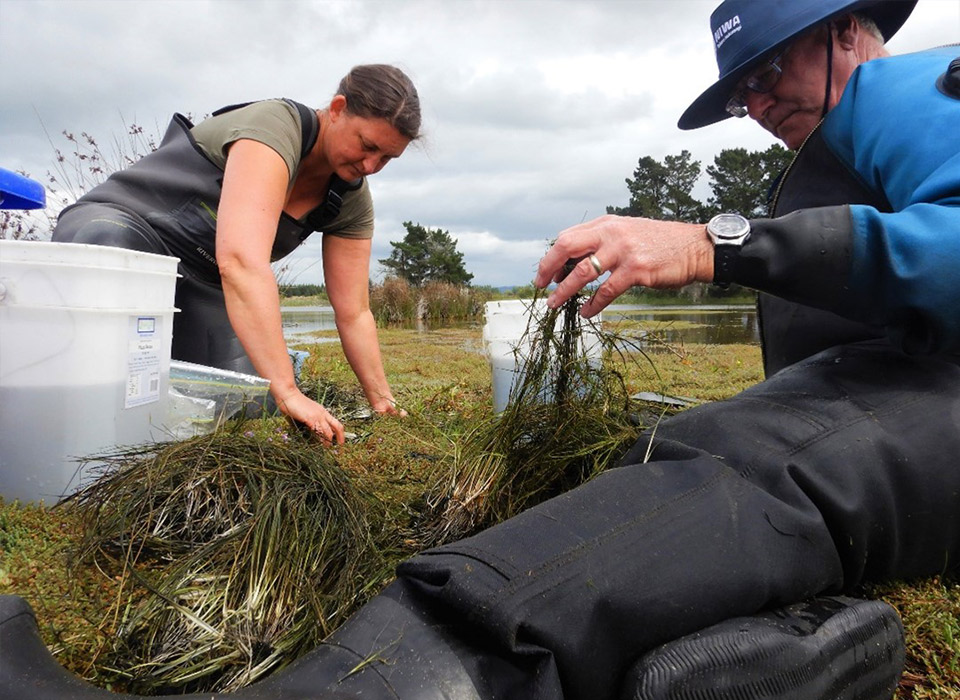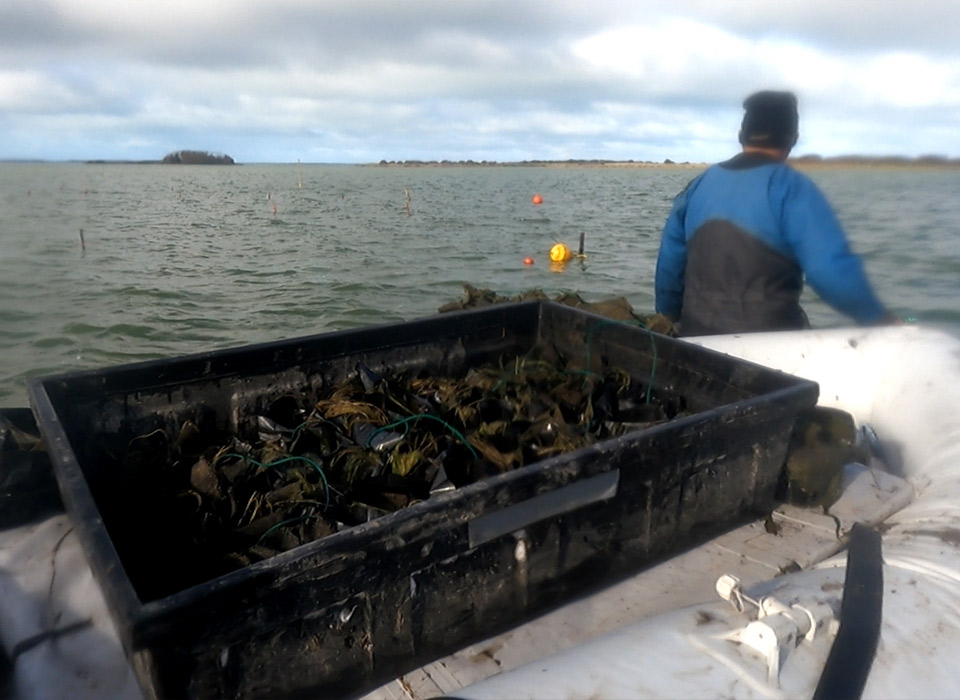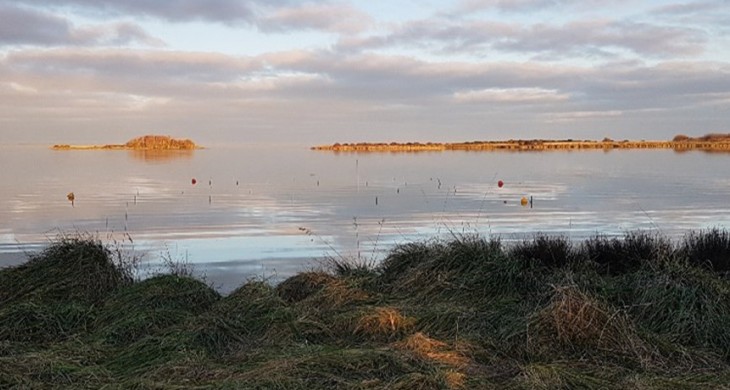13 July 2022
It’s hoped an ambitious, underwater planting trial at Te Waihora/Lake Ellesmere will help restore the mauri and ecosystem of this precious water body.
NIWA scientists are working to re-establish beds of kōrepo (Ruppia megacarpa), a tall submerged plant that stabilises bottom sediments, helps keep water clean, and provides good habitat for fish and other aquatic organisms.
Decades ago, the lake was dominated by this vegetation – until a massive storm in 1968 (the same one that caused the Wahine maritime disaster) ripped out the plant beds.
This destroyed the lake’s filtration system - fuelling algal blooms. The kōrepo also had a buffering effect on waves, and the loss of this barrier caused sediment to resuspend (stir up) - providing nutrients for the algal growth.
As a result, the water became permanently murky and the kōrepo beds couldn’t re-establish.
The preparation phase
In recent years, NIWA has been working with the Te Waihora Co-Governance partners on a range of activities to try and re-grow other types of macrophytes (water plants) in the lake, such as fennel-leaved pondweed (Stuckenia pectinata) and horse’s mane weed (Ruppia polycarpa).
However, none have properly established.
In 2018 a coastal survey revealed a couple of sites that still supported kōrepo – including Ashworth’s Ponds in North Canterbury.
In 2020, the scientists gained approval to collect this species from the ponds.
The plants were then transferred to a culture facility made up of large plastic tanks in Taumutu, close to Te Waihora.
NIWA lead scientist, Mary de Winton, says a range of treatment methods were used.
“We were trying to evaluate which techniques were best, both for plant growth and also ease of handling and planting into Te Waihora.”
This included trialling the kōrepo in sand, soil and gravel mixes (as a growth medium) and planting them in biodegradable pots, rock wool, hessian sleeves or sacks, ready for transplanting once they had established.
The team also had to ensure the plants wouldn’t be ‘shocked’ by their new environment.
“In May, we checked the salinity of the water at Te Waihora and based on that reading, we added salt to the culture to help them prepare for their move from freshwater to brackish water in the lagoon.”

Harvesting at Ashworth’s Ponds
Moving day
On 19 June 2022 the arduous process began of transferring around 700 potted plants to their new home in Overton’s Bay, a naturally sheltered part of Te Waihora on the western side.
Paul Champion, NIWA principal scientist of freshwater ecology, says conditions over that four-day period were “pretty horrid”.
“We had quite high winds and the water temperature was pretty low. At one point, we arrived to find our hose and gloves had frozen solid. But we wore exposure suits, so it wasn’t too uncomfortable.”
The team included NIWA hydrodynamics technician Jade Arnold, who looked after field logistics, was in charge of transferring the material from the growth facility to Te Waihora and had the all-important job of supplying warm drinks!
Meanwhile, fellow scientist Iñigo Zabarte-Maeztu – armed with a face mask – was tasked with securing each plant in its spot, into depressions in sticky mud on the lake floor.
Paul says a plastic mesh cage was placed over a portion of the kōrepo, to protect them from water birds like black swans.
“We want to see if bird browsing is a reason that plants haven’t previously been able to persist in those areas.”

A fighting chance
It’s hoped the kōrepo will start growing in spring - and it will be known by summer whether they’ve established or not.
“We have noticed from Google Earth that other submerged vegetation has grown in Overton’s Bay on a couple of occasions in the last ten years, so we knew that our transplant site was capable of supporting plants, at least for a short period of time.”
Paul is thrilled be part of such an ambitious project - which could potentially be a turning point for Te Waihora’s health.
“I don’t know if we’re going to get there, but I think that by putting that amount of material in it, we’ve given kōrepo a fighting chance.”

